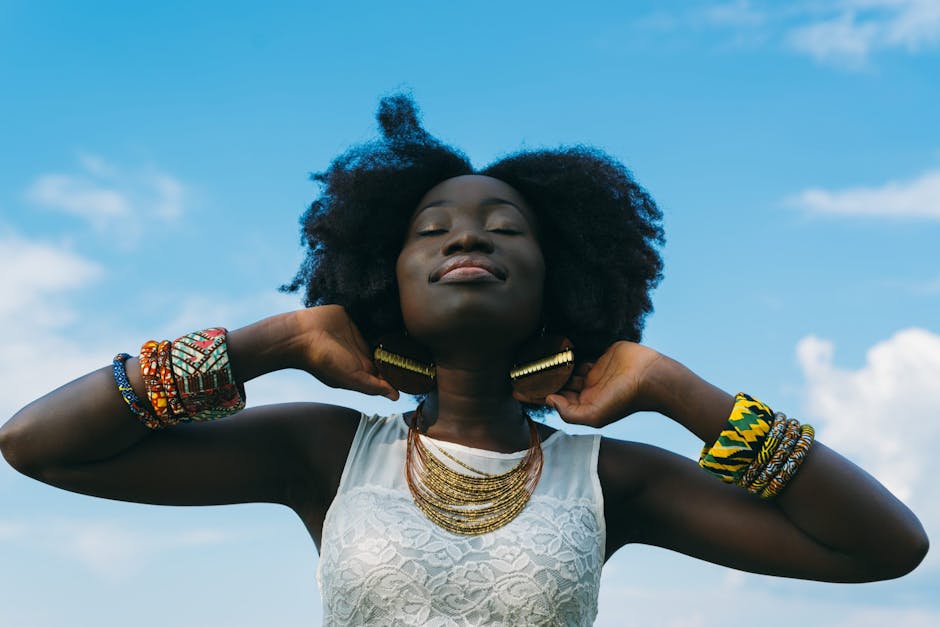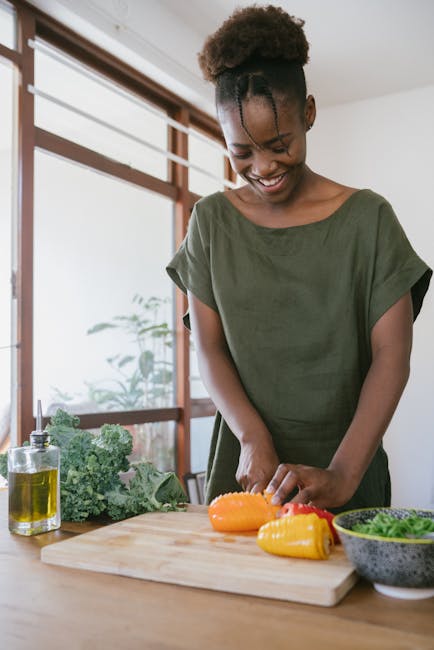https://www.youtube.com/embed/N3rmKrQPAE4
(cheerful music) - (Cheyney) When I started living history, everyone told me "black women wore what white women were wearing, but the poor version of it." And from the jump, I was like "That doesn't make sense at all." (exploratory piano music) My name is Cheyney McKnight. I run Not Your Momma's History channel and I specialize in telling
the stories of black folks in North America in the
18th and 19th century. So we started a new series, These Roots, where we do a day in the
life of a black person, whether they're free, enslaved,
wealthy, or working class. And so we follow them
through an entire day and we've done three episodes so far and we're going to continue to do it. And then I also am a
historical interpreter.
So, I travel around teaching people about the stories of my people. - Cheyney's series is going to
be linked all over this video because you need to check it out. But Cheyney is going to
talk a little bit about, sort of give you a little bit of a taste of some of the stories of these women. - Yes. Absolutely.
- And people. - So when I got started in living history, I really wanted to learn about what black women were wearing. A little bit about my background, growing up, I had family
members in New York and in South Carolina and so
I had a very unique experience where I knew elderly people
from the north and the south. And so I got a range of what black women were wearing in the 1940s and 30s. Going further back, I
really wanted to learn the style of black women because I could distinctly see the difference in style between black women and other women in the 1990s and the 2000s. This was the same in the
19th and 18th century. When I started living history, everyone told me "black women wore what white women were wearing, but the poor version of it." And from the jump I was like, "that doesn't make sense at all." I had access to paintings
and drawings and pictures, phot- photography of
the style of black women and we had, have a huge
amount of WPA narratives where black women were
talking about clothing and the different styles
they went through.
And then we also have firsthand
accounts of people observing black people, which they
really talk in depth about the style of black folks. What it comes down to is that black women always had this very peculiar style that is distinctly West African in origin. No matter how far removed
they were for the continent, whether it was through enslavement, through time, through space, they held onto these very distinctly West African characteristics in clothing and also in culture. And that this is what I really
wanted to educate people on and make them aware on, of.
I think people sometimes
dismiss African-American culture as a distinct culture because it's kinda become mainstream culture
in many ways with hip hop. A lot of that kind of
gets lost in the wash, but I want to make sure
people know the origins of black culture and style that is distinctly West African. - I mean, this is such a good segue - into what you're wearing,
(laughs) but I want to talk also a
little bit more about specifics. What is the style? Like
where does it come from? What are the developments? - I don't know.
- No, that's a great- - There's just like way too much. - No, no, no, that's a great question. So, I get my sources from
a lot of different places. I get it from the WPA narratives, from accounts of enslavers, European travelers.
But when looking at the WPA narratives, they talk about the necessity for things like mending and patchwork,
which everyone was doing. But I find that the
style, aesthetic choices of black folks were slightly different. There was one account from a missionary during the Civil War. They were teaching black
children how to read and write. There were donations from
New York City of dresses, beautiful plaid dresses,
for the little girls and the, the children brought
them home to their mothers. And what happened was the
mothers took contrasting colors and sewed it to the bottom. And so when the girls came
back, the mothers were like, we fixed the dress you
gave to our children.
(Cheyney laughs) Like they could not tell them
that this was a better dress because they added that
fabric to the bottom. Obviously, the woman was horrified, but I like to think that
they did fix those dresses. - You're welcome.
(laughs) And so those are, you see,
little anecdotes like that, where you would see white women who, whichever standing they are in society, would never have made that choice. Just like I think some French women who find themselves in America would makes distinctly different choices about their wardrobe, English women who had
just recently migrated or Irish women are also, were also making distinctive choices that are different.
So looking at someone,
you could kind of tell this person is from a
different place or culture. And I find those little things unique when you find them in stories. Also, last one, one of
my favorite stories. An enslaver's wife was
observing enslaved persons going to church or what
they call Sunday meeting. She said that the head wraps of the women were just so big and brightly colored that they could put one's
eye out from a mile away. - Head wraps were a big deal. - Yes, absolutely. So you can find head wraps
in the north and the south on women from enslaved
women, free black women, and depending on where you were, it can inform if the
person is enslaved or free or just simply black.

It was also a racial identifier. Some women, for example,
Juliette Toussaint. There's a beautiful painting
from the early 19th century. She and her husband lived
and worked in New York City and they were quite wealthy. They were, I would call
them upper middle class or upper, upper middling. And she is wearing this beautiful
head wrap, flat head wrap. And it's distinctly
different from the turbans that were worn in the early 19th century. But unfortunately, something
that I am trying to break down is that it wasn't just
black women and Creole women in Louisiana who were wearing head wraps or just in the south. Black women in the north and south were wearing head wraps,
we have the evidence on up into the 19th century.
I have a beautiful picture
from a historical society in New York, that pictures a black woman who works for a household
as a maid of all work. And she is wearing this huge,
fabulous, like mid-century, mid-19th century printed cotton. And it is huge, it looks like a Gele. And she's just like in the painting with her employers just, not the painting, the picture, with her employers, just "hey :)". It is so cool. - So.
- Fantastic. - It's like, so we've done
a collab, Cheyney and I, which you can find on her
channel, about chatelaines and we were just talking about
how a chatelaine makes noise and it announces your
presence to the room.
I feel like it has some of the similar, like, "I am here". - "Acknowledge me".
- Absolutely. - And I spent quite a long
time kind of hiding myself that now I want to announce to the world that this is who I am. This is where I'm from
and I embrace my culture and my people. - Everything to say "I'm here!"
(upbeat music) Head wraps and taking up space and- - You do
literally bring your work into the way that you dress. As you call it? - Yeah, so Afro-Victorian was a term coined by the costume
designer of Jingle Jangle.
And when I first heard
it, I was just like ooh. - You've been doing that for years. - Exactly! This is my style. And then also I incorporate
a lot of Afro-Futurism, which I think some of this - would incorporate.
- Which you can go check out - on Cheyney's channel. - I think that I, more so, educate people about things that we lost,
the knowledge that we lost, which you encounter a lot, for people. Because we didn't do some things since the 1920s or 30s, there's a whole generation of knowledge that we lost. And for, specifically for black women. There's a whole period
of time where we lost how to, for example,
stretch our natural hair. So when I say stretching, my
hair is in a natural state, but if I want to do a updo, like you see those beautiful pictures that were taken of black women, they weren't using hot combs. They were able to pin their hair down into a European hairstyle
with their hair like this.
And so there were some
things they did every day to stretch their hair. And so kind of making those connections and educating people about that. And I'll be doing a lot more videos on black hairstyling in the 19th century. - So definitely, I mean we've
said this a hundred times, but please go check out Cheyney's channel. - Me too. Thank you so much Bernadette. It's been so awesome to
finally just hang out with you. I feel like every time we see each other, we're racing by one another. I'm like hi Bernadette, bye! (laughs)
- Hello. Goodbye. - Right, right, right, right. - And it's always an honor
to listen to you talk and to watch your videos, of course, I cannot stress enough how much, not only is your channel informative but it's so well-produced, like it's exactly what the world needs.
All the links down below,
go and follow Cheyney. I mean, I'm sure all of you
already do because, you know. Yeah, I have no idea
how to end this video. - Yeah. - This is like the worst part. - I know, it's always the
worst part where you're like oh, I'll let you go. - So we're going to end this now. Go forth and be your most wonderful self and watch some videos. - Bye!
- Bye! (laughs)
- Okay, huzzah!.
african instruments
https://howtoplaythedjembedrums.com/afro-victorian-bringing-historical-black-womens-dress-into-the-21st-century-w-cheyney-mcknight-2/





